Buy or gift a stand-alone digital subscription and get unlimited access to dozens of back issues for just £18.99 / $18.99 a year.
Please register at www.exacteditions.com/digital/cornucopia with your subscriber account number or contact subscriptions@cornucopia.net
Buy a digital subscription Go to the Digital EditionThe largest surviving 18th/19th-century yalı on the Bosphorus, vividly captured in Patricia Daunt’s article The Vizier’s Retreat in Cornucopia 8
If a yalı can be seen as resembling a bird, the Kıbrıslı yalı is like a huge white bird of prey drying its wings on the shore below the fortress of Anadolu Hisarı. This long low building is the largest 18th-century yalı to survive on the Bosphorus. Its frontage stretches for more than 60 metres along the Asian shore.
From its vantage point halfway up the Bosphorus, it looks out on every turn of the twisting northern course of the channel almost up to the point where a sharp bar of indigo marks the entrance to the Black Sea. Rumeli Hisarı and Anadolu Hisarı, the rival fortresses of Europe and Asia, frame its spectacular view. The strait is at its narrowest here, no more than half a mile wide, a crossing point that has been used since Darius threw down his bridge of boats. Only on the Asian side, along the ancient coastal road from Üsküdar, is the house hidden by walls and trees, a greenness accentuated by wooded hills which until recently were part of the house’s parkland.
Here, dense gardens crowd in; on the other side of the house lies the open Bosphorus. The rambling gardens of the yalı still touch the meadows around the mouths of the Küçüksu and Goksu streams, “the Sweet Waters of Asia”. But modern urbanising mess has taken a heavy toll. A hundred and fifty years ago, Miss Pardoe wrote, describing the “Beauties of the Bosphorus”, that it needed “little aid from the imagination to remember them as one of the brightest gems in the diadem of nature”. Now the streams are sadly polluted. Bathers swim at their peril. No longer are there flowers enough to conduct a romance in the language of their names. The meadows where the Sultans’ horses once grazed are fenced off in plots, with warnings to tresspassers to keep away. But behind the yalı’s high walls, the magnificence of the selamlik’s shady trees and flowering shrubs remains. The harem’s fabled peonies continue to flower their best in June.
Being “noble so long as the person who elevated him exists”, Kara Vezir Silahtar Mehmed Pasha, the Black Vizier, who built the original yalı, is now long forgotten. Briefly grand vizier in 1770, he must have been a rich and cultured Ottoman living during an unexpectedly quiet interlude in which the empire enjoyed twenty years of peace. These were the happy years before the need arose to confront Catherine the Great’s Russia, when pashas built wooden summerhouses along the shores of the Bosphorus. It was the golden age of the “true” Ottoman yalı. No expense was spared with the building. Foundations were set on three plat- forms of quarried stone -mussel beds now- which still reach out into the bay to hold the yali safe during earth tremors and winter storms. Alder, pine and spruce from the Black Sea were used for the outside timbers, Lycian cedar for the floors, Pamphylian silver fir for the window frames and Anatolian oak for the doors, cupboards, niches, pillars and balustrades. In the selamlik, ranges of tall sash windows with large panes of imported Venetian glass were let into all four sides of both storeys. The downstairs corner rooms, identical in size and shape, led into the central hall, which in turn led into the southerly garden. Where the two arms of the ascending staircase meet, a wall of windows streches half the length of the house to overlook the red tiles of the harem’s roof and in those days allowed the eye a sweep of the lower Bosphorus before one carried on up to the landing off which all the upper rooms lead. As a summer retreat, the building was designed to allow maximum ventilation and to be filled with the strange aqueous light reflected off the waters, as well as to catch the sunlight over the gardens when the wind from the sea was inclement.
Eighty years after Kara Vezir built the yalı, his name had been erased from the history books. The house had passed through several hands and was in need of restoration. It was then that the man who gave his name to the yali acqui- red it. Kibrisli Mehmet Emin Pasha, to give him his full name, was one of Turkey’s most able nineteenth-century statesmen. Three-times grand vizier, twice first lord of the Admiralty, governor of Edirne and Aleppo, ambassador to London and St Petersburg, once proclaimed “the voice of Law from one end of the empire to the other”, he was nevertheless frequently plagued by debt. At his death in 1871 he left a daughter by each of two marriages, an admiring public, few friends and just eighty-one Turkish liras.
Kıbrıslı Mehmet Emin Pasha owed the beginnings of his tumultuous and illustrious career to the most skilled of all talent-spotters, Reshid Pasha, ins- tigator of the reforming Gülhane Decree, promoter of the Westernising Tanzimat movement, and six times grand vizier. Kıbrıslı Mehmet Emin Pasha’s first wife was a protegee of Reshid Pasha’s family; his second was picked out for him by Reshid Pasha himself. The lives of both women were intertwined with the history of the yali, and each left her indelible mark on it. Kibrisli Mehmet Emin Pasha’s forebears were from Anatolia, and resettled in Cyprus shortly after Selim II’s conquest of the island in 1571. Somehow they acquired farming land on its western shore, farmed for the production of sugar cane and sweet wines. For the next three centuries the profit from these farms was the source of their income; it only ceased when the farms were requisitioned by the British governor in 1948. Born on the family estates near Paphos in 1810, Kıbrıslı Mehmet Emin Pasha arrived in the capital (Istanbul) at the age of seven to enter the Palace School. By 25 fluent in English, French, Arabic, Persian, and Greek, he was an attache in the Paris embassy, betrothed to a wild and beautiful but well-connected twenty-two-year-old Roman Catholic who had separated from the English husband she had married when he was practicing medicine in the Levant.
In 1840, when he was thrity and married to the lady in question, who had become Moslem, and changed her name to Melek, Kıbrıslı Mehmet Emin Pasha and his wife bought the yalı, reportedly with the money raised from the sale of their furniture, at a time when he had temporarily fallen from grace and was searching for a house “in somewhat remote quarter where creditors generally come mounted on asses”. Ten years later, the marriage to Melek Hanim was over and Kıbrıslı Mehmet Emin Pasha was recalled from the London embassy, not on affairs of state but to deal with the scandal attributed to the wife he had left behind in the yalı. His chief eunuch had been found strangled in the hammam of the harem and Melek Hanim was suspected. Kıbrıslı Mehmet Emin Pasha ordered the hammam to be torn down before his return London; a lily pond was built into its foundations, as if to absolve the guilt of those implicated in the murder. Melek Hanım’s memoirs tells her side of the story. But what really happened in the hammam during the afternoon of their daughter’s first reading of the Koran will never be knnown. Some say that the crime was committed by a female member of the household, jealous of a favourite eunuch’s power over his mistress. But it was whispered that the eunuch had discovered that Melek Hanim was feigning a pregnancy in order to introduce into her household a child who was not her own, to replace the only son who had died on the morrow of Kıbrıslı Mehmet Emin Pasha’s departure for London. If her husband was to save his career, he had no choice but to repudiate his wife. She was tried and exiled to Konya. Reşid Pasha arranged forthwith the contract of Kibrisli Mehmet Emin Pasha’s second marriage, as he had the first. Two portraits of Kıbrıslı Mehmet Emin Pasha hang in the yalı today.In the first he is depicted as the precocious young governor of Aleppo. The other portrait was painted by an English artist only weeks before he left London. He is dressed in his black Stambouline frock coat, black trousers and fez. It is a penetrating study of a man who enjoys high office but is inwardly ill at ease. The second wife, Feride Hanim, was the last of Ayaz Pasha’s line. If history and fable go hand in hand, this illustrious Albanian forebear was Suleyman the Magnificent’s swashbuckling grand vizier, who, before he died in 1539, helped his master to double the size of the Ottoman Empire, and has 140 children and estates streching miles across Istanbul, from Ayazpasha to Ayazağa. With the aid of Feride Hanım, the yalı was renovated, enlarged and modernised with a new east wing balancing the identical west wing. A balcony overlooking the Bosphorus was added to the original facade. Every room was “gaily painted”. Banisters carved to imitate fer forge were as fine as the additional classical cornices were grand.
These extensive building works were apparently undertaken over the course of winter months between 1850 and 1870. An entirely new grand hall, or central sofa, was built out into the garden, streching the depth of the house from the Bosphorus to the land entrance facade. Its floor of cedar planks cut along the grainand riveted by iron nails has only recently been replaced by marble. The atrium, possibly inspired by the seventeenth-century wooden dome in the nearby Koprulu Yali, must have had scaffolding up for months as artists worked on the frecoes of peonies. Beneath these, master plasterers would have worked on the delicate task of moulding the neoclassical columns and friezes. It still has the highest, grandest hall of the yalis on the Bosphorus. Kıbrıslı Mehmet Emin Pasha completed his house with a third large hall fronting into the sea, its doors and windows opening onto the terrace, where the boats still moor. This acted and still does, as a sea entrance. Behind it on the southern side is the winter dining room, still lined with cupboards for storing bedrools for guests spending the night.
The name Kıbrıslı (literally Cypriot) denotes the family’s origins in Cyprus, where they were granted lands in the 16th century that formed the basis of their fortunes until the British requisitioned them in the 1940s. Perhaps the loveliest contrivance of all in the rebuilding was the winter garden, or orangery. Its walls of huge windows face south and east, and its divans are ranged along the walls; but the most strikingly original feature is the fountain in its centre, surrounded by a pavement of finely worked krokalia. The intricate technique, much used by the Byzantines, producing a carpet of geometric and floral designs from a mosaic of black and white Maltese marble pebbles, was carried on into the garden leading up to the selamlik’s front door. Sadly, time and winter rains covered these exterior mosaics with layers of silt. In places they have been covered with a tidier and more mo- dern form of pavement. On Kıbrıslı Mehmet Emin Pasha’s death in 1871, the yalı passed to the only child of his second marriage, Atiye Hanım, who is the forebear of those who still live in the main section of the house. Deeply traditional she maintained a strict division between harem and selamlik until her death in 1922. While her salon was said to be almost like a mosque, the selamlik of her husband, the son of a pasha from the Peloponnese, who conveniently adopted the name of Kibrisli Mustafa Pasha, was far from traditional. As Atiye Hanim conducted prayers on the other side of the wall, he gave garden and cocktail parties to which Pierre Loti, with his powdered cheeks and platform-soled shoes, never refused an invitation and which the more emancipated ladies of the harem were free to attend. Whatever the divisions in the household, the first Liberal Democratic part was founded at the yali by the husband of Atiye Hanim’s eldest daughter together with her own three sons, Tevfik, the eldest, Nazim and Shevket. Five years later, on the eve of the First World War, Tevfik was assasinated during Enver Pasha’s Union and Progress coup d’etat.
When Atiye Hanım died, the house was, on advice of the courts, divided up into five equal parts, for which the surviving children drew lots. The west wing went to Shevket, Atiye Hanim’s youngest son, who was married twice, first to a granddaughter of Cemile Sultan, whom he divorced, and later to Princess Atiye, daughter of Khedive Abbas Hilmi of Egypt. He had no children and his heirs was his second wife’s son by a former marriage, who commited the unforgivable sin of selling his stepfather’s inheritance over the heads of the rest of the family. An unsightly wall now cuts the old harem garden in half. From the sea, the west wing still looks as if it is part of the yali, and so it is architecturally, but it is a separate property, divided firmly from the rest. When it was sold, Kıbrıslı Mehmet Emin Pasha’s great-grandson Selim Dirvana, took a train to Ankara to ensure that an order for its protec- tion was issued.
The Venetian lantern in the hall, which streches from the sea entrance to the gardens behind the house and used to serve as a ballroom. Atiye Hanim’s eldest daughter, Aziz, inherited the two storeys of the old selamlik. Her descendents still spend their summers there. Though they have introduced modern bathrooms and brought the kitchens indoors, they have left the hundred-year-old paint undisturbed. It has aged to resemble the trans- lucent waters outside. What is left of the old harem garden, with its lily pond where the hammam once stood, runs up to the road, cruedly hemmed in by the west wing’s boundary wall. Although the selamlik gate serves as its ent- rance, the selamlık’s turnstile food hatch is only a folding memory; it was considered a dangerous plaything for Aziz Hanım’s sisters four boys and was bricked in. The rest of the central part and the east wing of the house, together with the dependencies in the gardens, were shared between the remaining Kıbrıslı children: Muzeyyen, youngest of the three sisters, who married an Egyptian pasha and lived with her only son in Paris; Nazim, who was a cavalry officer and married a White Russian but never had children; and Refika, who married the handsome grandson of a sipahi officer, Edhem Dirvana, and had the four boys who played with the food hatch. Muzeyyen sold her part to Refika. Anetodes are still told of the fun and generosity, the true Ottoman hospita- lity, enjoyed by visitors in the years between the foundation of the Republic and late 1950s.
The Dirvanas and Kibrislis kept open house. Edhem Bey was overheard to remark his wife over lunch one day, “I do not recognise that young man at the end of the table”, to which she replied, “Neither do I, but he has been with us for a fortnight.” Şevket filled the yalı with a gilded circle of philosophers and writers. Yahya Kemal, Riza Tevfik and Fazil Ahmet were among those who unrolled mattresses taken from the cupboards in the winter dining room to sleep under the windows fronting the Bosphorus, guarded only by the moon and the waters. Nazım, the cavalry officer, has a particular claim to family fame. He crossed the Bosphorus through the fierce current from Rumeli Hisari to the yali steps on his horse in full dress uniform, not for a wager but to prove to his com- manding officer that horses were better and more reliable than rowing boats. The four Dirvana sons, Mahit, Emin, Suleyman and Selim, grew up in the ferment of the new Republic’s early years. Mahit, the eldest, and his wife, Nesterin Hanım, returned each summer to the yali. It was they who restored the orangery and had the main hall paved with marble. It was she who discovered the origi- nal ceiling in her salon overlooking the Bosphorus (the ceiling was probably lowered for warmth during the First World War). A widow now, she still occupies her apartment here in summer. Emin was a soldier, bluff and upright, whose toothbrush moustache, no nonsense manner and faultless Oxford English astonished London when he was Turkish military attache in the 1950s. He went on to be Turkey’s first ambassador to the new Republic of Cyprus in 1960. Suleyman is a doctor who has remained in Istanbul to practise.
Selim, the archeologist of the family, married Mihrimah Hanım and became father of Refika Hanım’s only grandchild, a daughter. Born on the eve of the Second World War, Mihda was brought up in the yali during the lean wartime years, huddling over stoves in winter, boating and swimming in summer, and always surrounded by horses and dogs. Selim Dirvana’s shell collection in the orangery. Refika Hanım died in 1961. Money had been tight for some years. Then apparent- ly quite unexpectedly, Selim Bey’s wife inherited her American mother’s for- tune. The yalı survives in the fine condition we see today largely thanks to this timely injection of resources. Selim Dirvana, now a widower, looks back down the years to his great-grand- father, Kıbrıslı Mehmet Emin Pasha, and forward to the future of the great- grandchildren among whom he lives, in a modern house built over the founda- tions of a garden kiosk. His daughter Mihda married the influential business- man İlkay Bilgişin, and their children and grandchildren, Komilis, Kaslowskys and Bilgishins, now spread through Kıbrıslı Mehmet Emin Pasha’s east wing and the garden buildings. The yalı lives on, a unique monument to the declining years of the Ottoman Empire and full of vitality for the 21st century. Its story will continue to be the story of one family: living history which story books could not better.
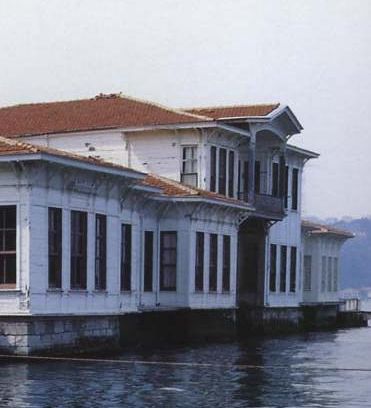
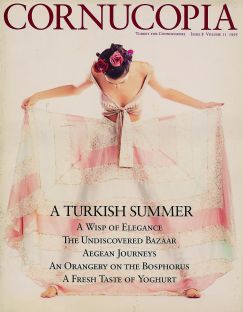
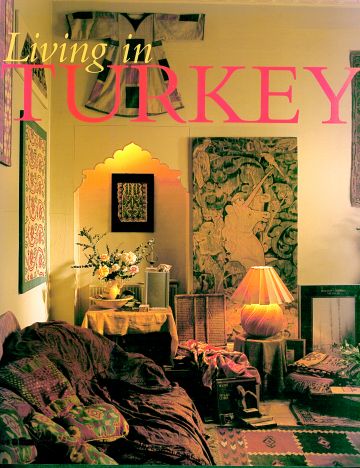
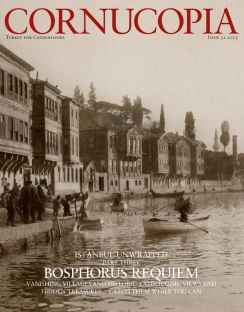
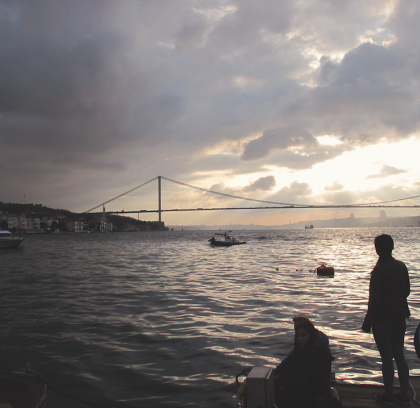
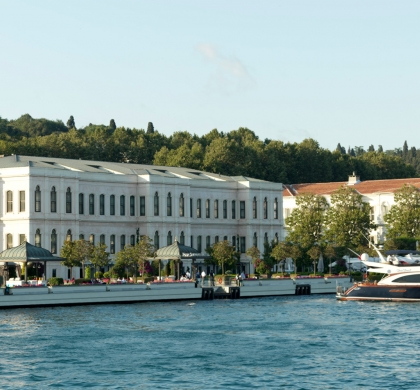
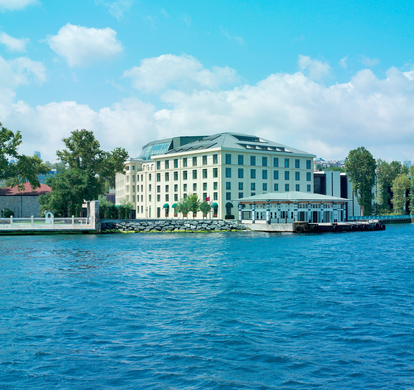
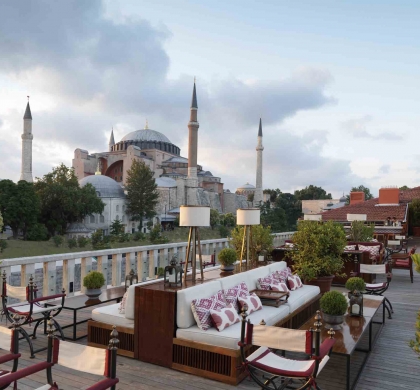
 Issue 66, December 2023
Turkey’s Centenary Issue
Issue 66, December 2023
Turkey’s Centenary Issue

Cornucopia works in partnership with the digital publishing platform Exact Editions to offer individual and institutional subscribers unlimited access to a searchable archive of fascinating back issues and every newly published issue. The digital edition of Cornucopia is available cross-platform on web, iOS and Android and offers a comprehensive search function, allowing the title’s cultural content to be delved into at the touch of a button.
Digital Subscription: £18.99 / $18.99 (1 year)
Subscribe now